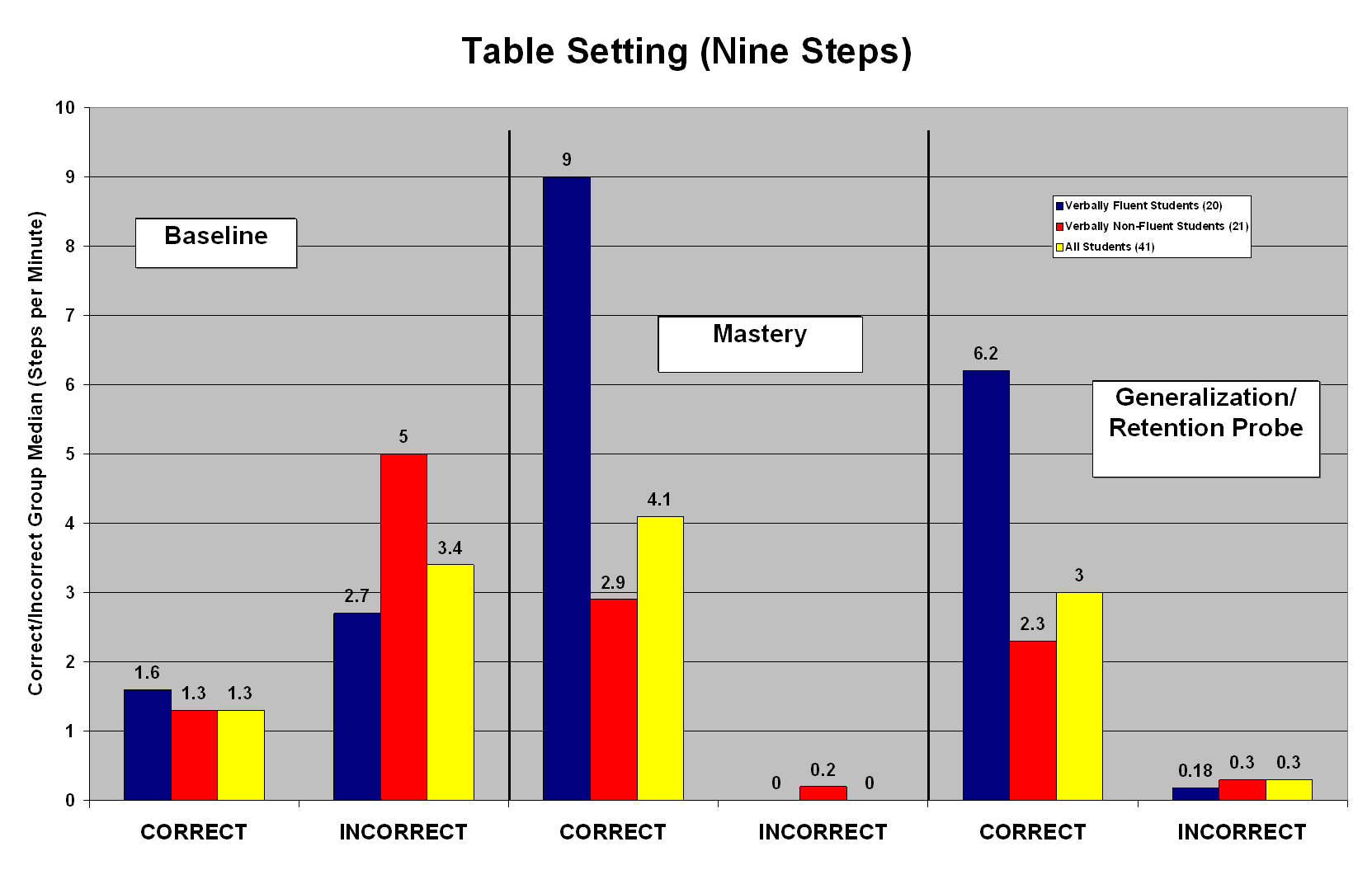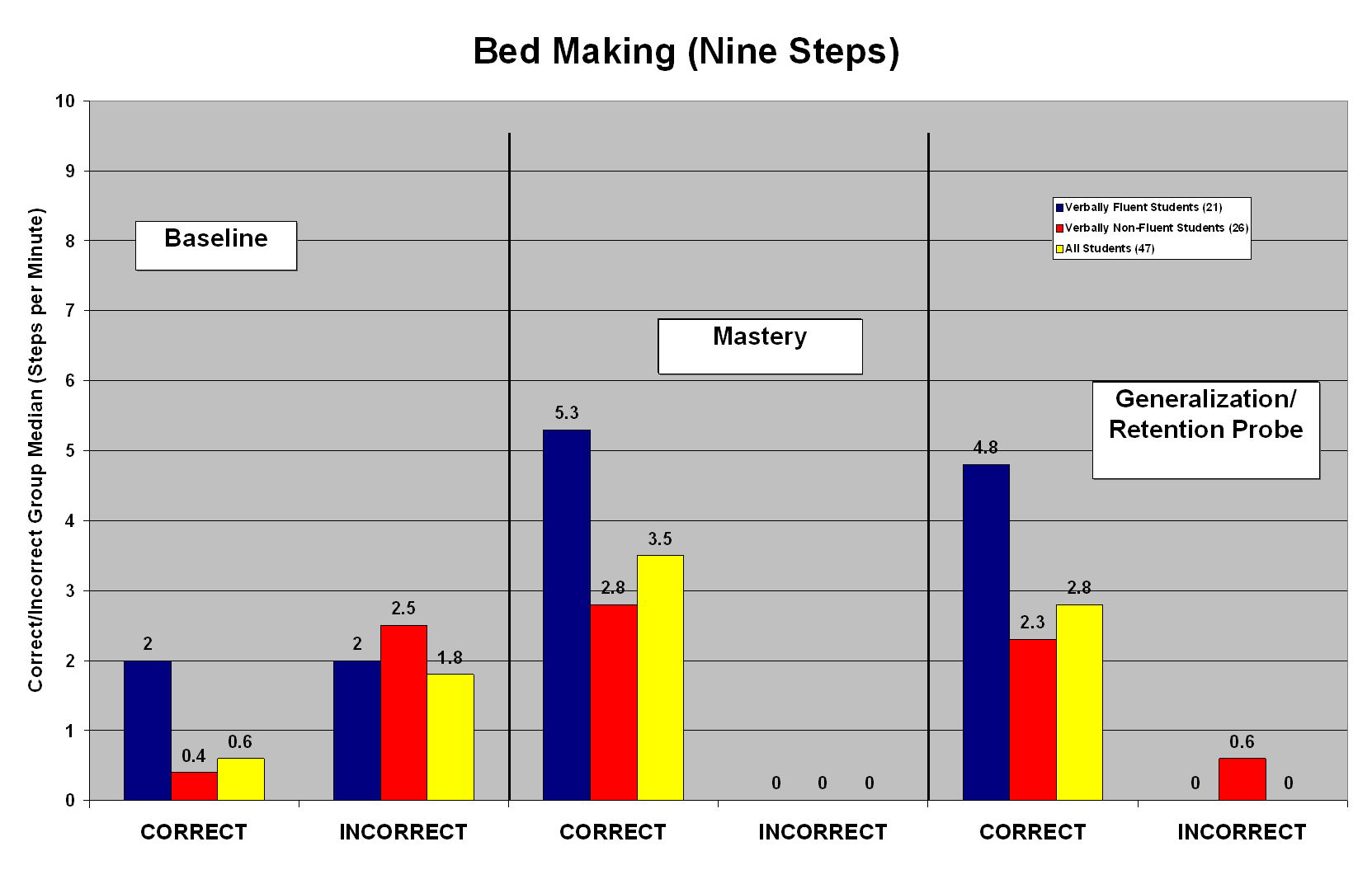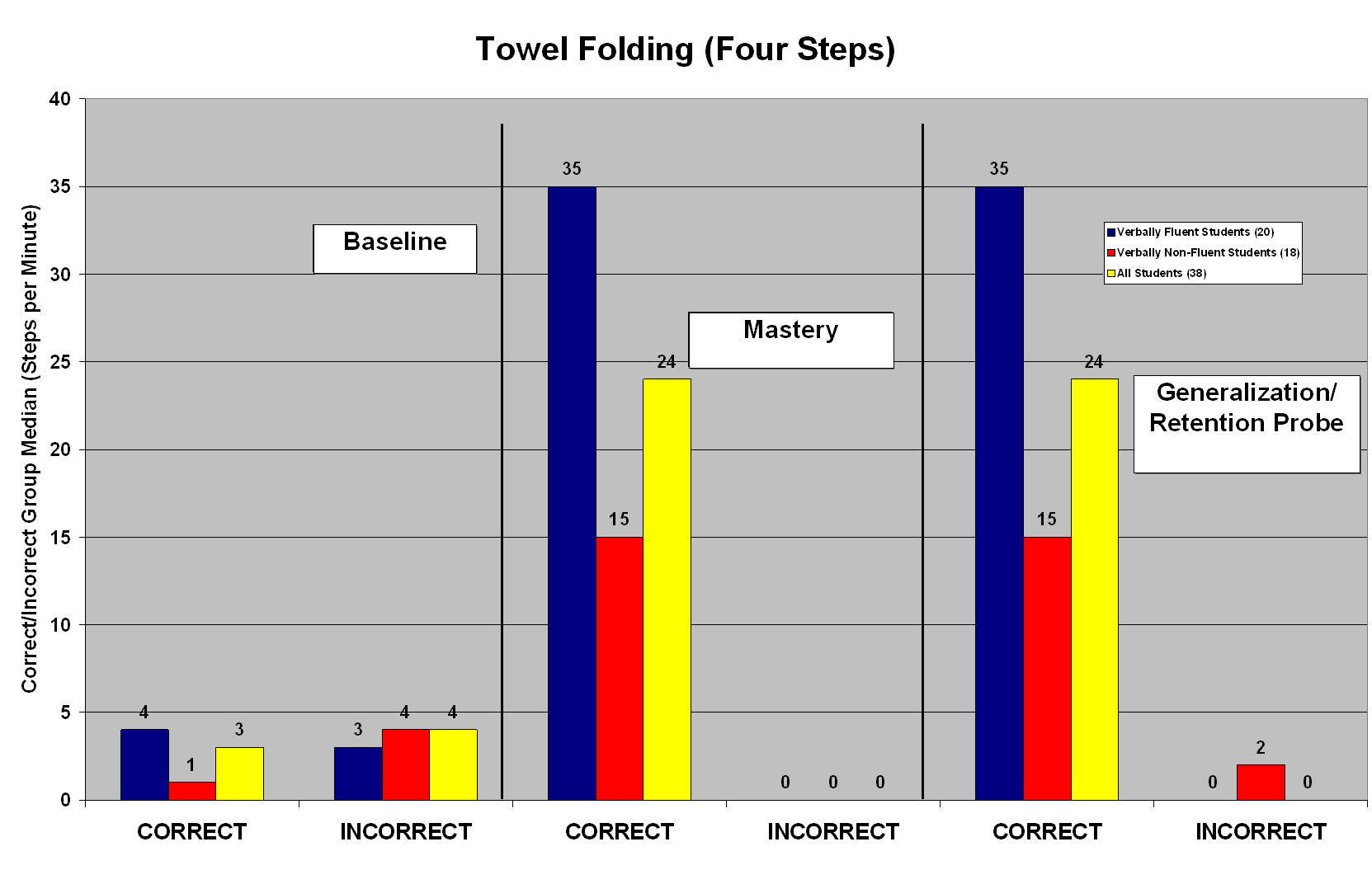
|
Use of Skin-Shock at the Judge Rotenberg Educational Center (JRC) |
Improved Activities of Daily Living Skills Generalized Across Academic and Residential Settings Utilizing a Precision Teaching Approach
Timothy J. H. Paisey, Matthew Israel Ph.D., Edward G. Langford, Jr., Erin E. Holland, Maryellen Kelley, and Carla Melone
The Judge Rotenberg Educational Center (www.judgerc.org) operates day and residential programs for children and adults with behavior problems, including conduct disorders, emotional problems, brain injury or psychosis, autism, and developmental disabilities. The fundamental approach taken at JRC is the use of behavioral psychology and its various technological applications, including behavioral education, programmed instruction, precision teaching, behavior modification, behavior therapy, behavioral counseling, self-management of behavior, and chart-sharing.
The majority of students referred to JRC display complex profiles of surplus and deficit behaviors that include significant delays in adaptive skills. Instruction in adaptive behaviors at JRC employs principles of Precision Teaching (PT) (Potts, Eshleman & Cooper, 1993) emphasizing fluency building or “overlearning” (Binder, 1987) to promote retention and automatic, error-free application. The current study reports on transfer of training of daily living skills to a natural setting following attainment of mastery.
METHOD
Participants and Setting
Adolescent and adult students at JRC attend weekly Life Skills classes in which they receive instruction in functional living skills as part of their general educational programming. They live in community residences and attend educational classes at a school building. Students have diagnostic labels that include psychotic disorders, bipolar disorder, disruptive behavior disorders, intermittent explosive disorder, pervasive developmental disorders or mental retardation. For purposes of instruction and data reduction in this study, students were classified as either verbally fluent (generally borderline to average cognitive ability) versus verbally non-fluent (generally with developmental disabilities). These were samples of opportunity not specifically selected for this study, and all participants received a full range of concurrent educational and behavioral interventions. Data were collected for those students who reached mastery level and received a retention/generalization check in each of the three selected areas. Sample sizes were as follows: towel folding, n = 38 (20 verbally fluent, 18 verbally non-fluent), bed-making, n = 47 (26 verbally fluent, 21 verbally non-fluent), and table-setting, n = 41 (20 verbally fluent, 21 verbally non-fluent).
Skill Instruction
Data for three sample target skills trained within Life Skills classes are presented. Skills included folding towels, bed making, and table setting. Each was task analyzed (Howell, Kaplan & O’Connell, 1979) with forward-chained instruction provided across all component steps each session. A sample task analysis is presented in Figure 1. All students received initial demonstration plus either verbal instruction and correction (verbally fluent group) or graduated guidance (verbally non-fluent group). Students received Life Skills instruction in a separate classroom equipped with furniture and supplies 1 – 3 days per week, with each skill practiced 12 – 48 times weekly over a 12-week period. Instruction was provided by two teachers who followed standardized instructional protocols and collected data on student performance. Students were permitted additional independent practice beyond the termination of formal instruction.
Response Measures
In accordance with PT principles, each step of a task analyzed chain was scored correct or incorrect using an objective standard of highly accurate performance. These counts (“timings”) were converted to rate correct and rate incorrect and charted on standard celeration charts. Individualized aims (rate correct per minute) were set for each student based on their data trends. Mastery was defined as rapid, accurate, near error-free performance of all steps in a given task analysis. A “mastery timing” was taken when the student’s performance was judged to have attained maximal fluency (both fast and accurate). Data from three timings are reported: pre-instruction baseline, mastery timing (within the Life Skills class) and generalization/retention probe consisting of a timing at the student’s residence. This timing was made at a setting where training had not occurred and where the student was prompted to perform the life skill previously mastered. Observations were made by different staff using the same task analyses.
RESULTS
Folding Towels
Summary data are presented in Figure 2 as median rate correct and rate incorrect for each group and the combined sample, for the baseline timing, mastery timing and generalization/retention probe. The data indicate substantial increases in rate correct with reductions in error rates to zero or near-zero. Although student groups differed in expected directions, both attained mastery criteria (although required practice time and trials varied), and both displayed adequate transfer of training to the natural setting.
Bed Making
Summary data are presented in Figure 3 as median rate correct and rate incorrect for each group and the combined sample, for the baseline timing, mastery timing and generalization/retention probe. The data indicate substantial increases in rate correct with reductions in error rates to zero or near-zero. Although student groups differed in expected directions, both attained mastery criteria (although required practice time and trials varied), and both displayed adequate transfer of training to the natural setting.
Table Setting
Summary data are presented in Figure 4 as median rate correct and rate incorrect for each group and the combined sample, for the baseline timing, mastery timing and generalization/retention probe. The data indicate substantial increases in rate correct with reductions in error rates to zero or near-zero. Although student groups differed in expected directions, both attained mastery criteria (although required practice time and trials varied), and both displayed adequate transfer of training to the natural setting.
DISCUSSION
Students with significant developmental, behavioral and psychiatric challenges were able to acquire daily living skills to individualized mastery criteria. Application of Precision Teaching (PT) principles promoted significant skill improvements within a relatively brief period with successful transfer of training to students natural settings. Relatively brief training periods provided additional evidence for efficiency of PT strategies irrespective of student characteristics or baseline performance. These data did not address possible effects of overlearning on long-term skill retention.
REFERENCES
Binder, C. V., (1987). Fluency-building. Precision Teaching and Management Systems, Inc.
Howell, K., Kaplan, J., & O’Connell, C.Y., (1979). Evaluating exceptional children: A task analysis approach. Columbus, Ohio: Charles E. Merrill Publishing Company.
Potts, L., Eshleman, J. W., & Cooper, J. O., (1993). Ogden R. Lindsley and the historical development of Precision Teaching, The Behavior Analyst, 16, 177-189.


